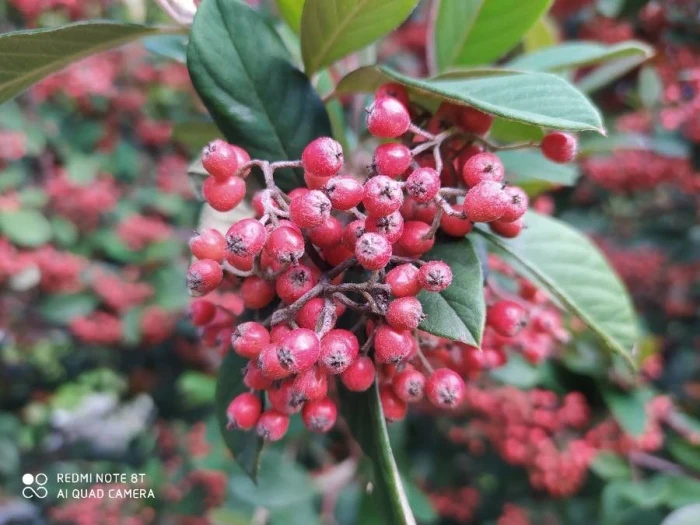Parney Cotoneaster
(Cotoneaster coriaceus)
Parney Cotoneaster (Cotoneaster coriaceus)
/
/

Cristian Zanella Cristian Zanella
CC BY-SA 4.0
Image By:
Cristian Zanella Cristian Zanella
Recorded By:
Copyright:
CC BY-SA 4.0
Copyright Notice:
Photo by: Cristian Zanella Cristian Zanella | License Type: CC BY-SA 4.0 | License URL: https://creativecommons.org/licenses/by-sa/4.0/ | Attribution: Cristian Zanella Cristian Zanella (cc-by-sa) | Rights Holder: Cristian Zanella Cristian Zanella | Publisher: PlantNet | Date Created: 2020-10-18T11:12:02Z | Title: Cotoneaster coriaceus Franch.: fruit | Notes: |





















































Estimated Native Range
Climate Requirements for Troy, New York
| This Plant | Your Site | Plant Suitability for Your Location | ||
|---|---|---|---|---|
| • Precipitation | 5" - 107" | 38" | Aquatic | Aquatic |
| • High Temp. | 60°F - 97°F | 84°F | Your summer temperatures are normal for this plant. | Excellent |
| • Low Temp. | 8°F - 51°F | 13°F | Your winter temperatures are normal for this plant | Excellent |
This plant should grow very well at your location without additional irrigation.
Summary
Cotoneaster coriaceus, commonly known as Parney Cotoneaster, is a deciduous shrub native to rocky slopes and forest margins in the mountainous regions of Western China. It typically grows to a height of 4-12 feet (1.2-3.7 meters) and a width of 6-9 feet (1.8-2.7 meters), with a dense, rounded form. The leaves are dark green and leathery, providing a lush backdrop for the small, 5-petaled flowers that are white with a yellow center, blooming in late spring to early summer. The flowers are modest in size but can be quite numerous, creating a decorative effect. In the fall, bright red berries adorn the shrub, which are attractive to birds and other wildlife.
Parney Cotoneaster is valued for its versatility in the landscape, serving as an excellent choice for hedges, screens, and foundation plantings. It is also used for erosion control on slopes due to its dense root system. This shrub is adaptable to a range of soil types, provided they are well-drained, and it can tolerate both full sun and partial shade. While it is drought-tolerant once established, moderate watering will keep it looking its best. Gardeners should be aware that Cotoneaster coriaceus can be prone to fire blight and scale insects. Additionally, its ability to self-seed and spread has led to it being considered invasive in some regions outside its native range, so caution is advised when planting.CC BY-SA 4.0
Parney Cotoneaster is valued for its versatility in the landscape, serving as an excellent choice for hedges, screens, and foundation plantings. It is also used for erosion control on slopes due to its dense root system. This shrub is adaptable to a range of soil types, provided they are well-drained, and it can tolerate both full sun and partial shade. While it is drought-tolerant once established, moderate watering will keep it looking its best. Gardeners should be aware that Cotoneaster coriaceus can be prone to fire blight and scale insects. Additionally, its ability to self-seed and spread has led to it being considered invasive in some regions outside its native range, so caution is advised when planting.CC BY-SA 4.0
Plant Description
- Plant Type: Shrub
- Height: 4-12 feet
- Width: 6-9 feet
- Growth Rate: Rapid
- Flower Color: White
- Flowering Season: Spring
- Leaf Retention: Deciduous
Growth Requirements
- Sun: Full Sun, Part Shade
- Water: Low, Medium
- Drainage: Slow, Medium, Fast
Common Uses
Bank Stabilization, Bee Garden, Bird Garden, Border Plant, Butterfly Garden, Deer Resistant, Drought Tolerant, Hedges, Hummingbird Garden, Low Maintenance, Rabbit Resistant, Rock Garden, Salt Tolerant, Street Planting
Natural Habitat
Native to rocky slopes and forest margins in the mountainous regions of Western China
Other Names
Common Names: Milkflower Cotoneaster, Hou Ye Xun Zi
Scientific Names: Cotoneaster coriaceus, Pyrus coriacea
GBIF Accepted Name: Cotoneaster coriaceus Franch.